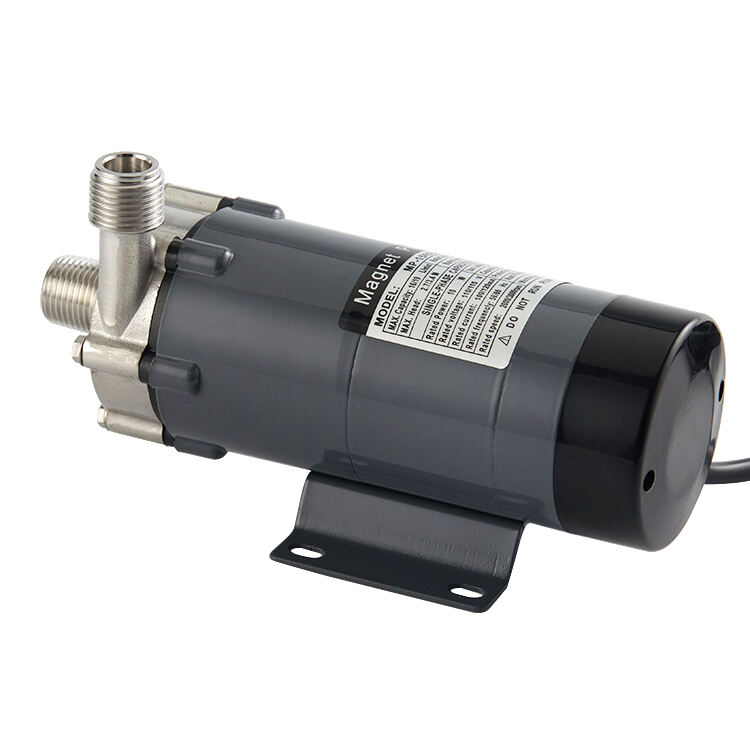Maximizing Brewery Efficiency Through Proper Equipment Care
In the intricate world of brewing, the wort pump stands as a crucial component that can make or break your brewing process. This vital piece of equipment ensures smooth transfer of wort throughout various stages of brewing, contributing significantly to the final quality of your beer. Understanding proper maintenance techniques not only extends the life of your wort pump but also guarantees consistent brewing results and helps avoid costly downtime.
Professional brewers know that a well-maintained wort pump operates more efficiently, reduces energy consumption, and prevents contamination issues that could compromise entire batches. Whether you're running a commercial brewery or crafting beer at home, implementing a comprehensive maintenance routine is non-negotiable for achieving brewing excellence.
Understanding Your Wort Pump Components
Essential Parts and Their Functions
Every wort pump consists of several key components that work in harmony to move hot wort through your brewing system. The impeller, housing, seals, and motor form the core of the pump assembly. The impeller creates the necessary pressure to move liquid, while the housing contains and directs the flow. Quality seals prevent leakage and maintain pressure, and the motor provides the mechanical power needed for operation.
Understanding these components helps brewers identify potential issues before they become serious problems. Regular inspection of each part ensures optimal performance and helps prevent unexpected failures during crucial brewing operations.
Common Types of Wort Pumps in Brewing
Centrifugal pumps are the most widely used type in brewing operations, known for their reliability and efficiency in moving hot wort. Magnetic drive pumps offer the advantage of seal-less operation, reducing maintenance requirements and eliminating the risk of seal failures. Positive displacement pumps, while less common, excel in applications requiring precise flow control.
Each type of wort pump has specific maintenance requirements and operational characteristics. Matching the right pump to your brewing needs and understanding its particular maintenance demands is crucial for long-term success.
Preventive Maintenance Protocols
Daily Cleaning Procedures
The foundation of effective wort pump maintenance lies in daily cleaning routines. After each use, thoroughly flush the pump with clean, hot water to remove any residual wort or debris. This prevents the buildup of organic materials that can lead to contamination or mechanical issues. Following the cleaning cycle with a sanitizing solution ensures hygienic conditions for your next brewing session.
Remember to pay special attention to areas where residue commonly accumulates, such as the impeller housing and discharge ports. A proper clean-in-place (CIP) routine should be established and followed consistently to maintain optimal pump performance.
Weekly and Monthly Checks
Beyond daily cleaning, implementing regular inspection schedules is vital for maintaining wort pump efficiency. Weekly checks should include examining seals for wear, inspecting impeller conditions, and monitoring motor temperature during operation. Monthly maintenance should involve more thorough inspections of bearing conditions, shaft alignment, and electrical connections.
Documenting these inspections helps track wear patterns and predict when components might need replacement, allowing for planned maintenance rather than emergency repairs.
Troubleshooting Common Issues
Identifying Performance Problems
When a wort pump begins showing signs of trouble, quick identification of the issue can prevent more serious complications. Common indicators include unusual noise during operation, reduced flow rates, leakage around seals, or excessive vibration. Each symptom provides clues to potential underlying problems that require attention.
Maintaining detailed records of normal operating parameters makes it easier to spot deviations that might indicate developing issues. This proactive approach to monitoring helps prevent catastrophic failures during critical brewing operations.
Solutions for Regular Challenges
Many common wort pump problems can be resolved through systematic troubleshooting. Cavitation issues often result from improper inlet conditions and can be addressed by adjusting liquid temperatures or inlet configurations. Seal leakage might require replacement of worn components or adjustment of packing gland pressure. Motor overheating could indicate the need for bearing maintenance or cooling system improvements.
Having spare parts on hand for common wear items allows for quick repairs when needed. This preparation minimizes downtime and ensures continuous brewing operations.
Optimizing Performance and Efficiency
Advanced Maintenance Techniques
Beyond basic maintenance, implementing advanced care techniques can significantly extend wort pump life and improve performance. This includes regular vibration analysis to detect early signs of mechanical issues, thermal imaging to identify potential hot spots, and precision alignment checks to ensure optimal operation.
Using food-grade lubricants specifically designed for brewing applications helps maintain proper operation while ensuring product safety. Regular calibration of monitoring instruments ensures accurate performance measurement and timely maintenance interventions.
Energy Efficiency Considerations
Proper maintenance directly impacts the energy efficiency of your wort pump. Clean, well-maintained pumps require less power to operate effectively. Regular efficiency monitoring helps identify when maintenance might be needed to restore optimal performance. Consider implementing variable frequency drives (VFDs) to optimize power consumption based on actual process requirements.
Tracking energy consumption patterns can provide early warning of developing issues while helping to minimize operating costs. This data-driven approach to maintenance helps justify investments in preventive maintenance programs.
Frequently Asked Questions
How often should I replace the seals in my wort pump?
Seal replacement frequency depends on usage patterns and operating conditions, but generally, mechanical seals should be inspected quarterly and replaced annually or when signs of wear appear. Regular monitoring of seal performance can help determine the optimal replacement schedule for your specific application.
What are the signs that my wort pump needs immediate attention?
Key warning signs include unusual noise or vibration, decreased flow rate, leakage around seals, excessive heat from the motor, or inconsistent performance. Any of these symptoms warrant immediate inspection to prevent potential failure during brewing operations.
Can I use standard cleaning solutions for my wort pump maintenance?
Always use cleaning solutions specifically approved for brewing equipment. Standard industrial cleaners may contain harsh chemicals that can damage pump components or leave residues harmful to the brewing process. Consult your pump manufacturer's guidelines for recommended cleaning products and procedures.

